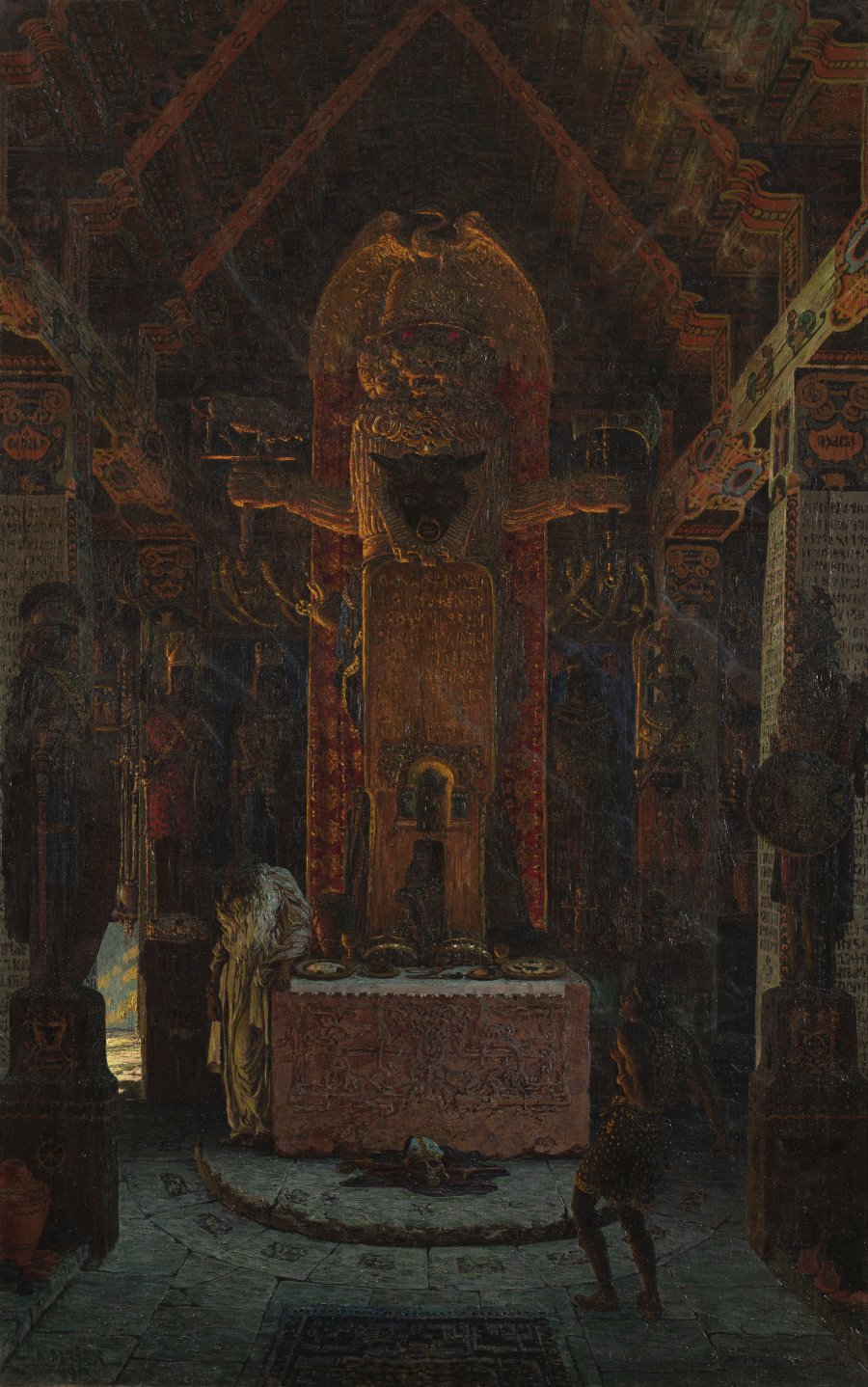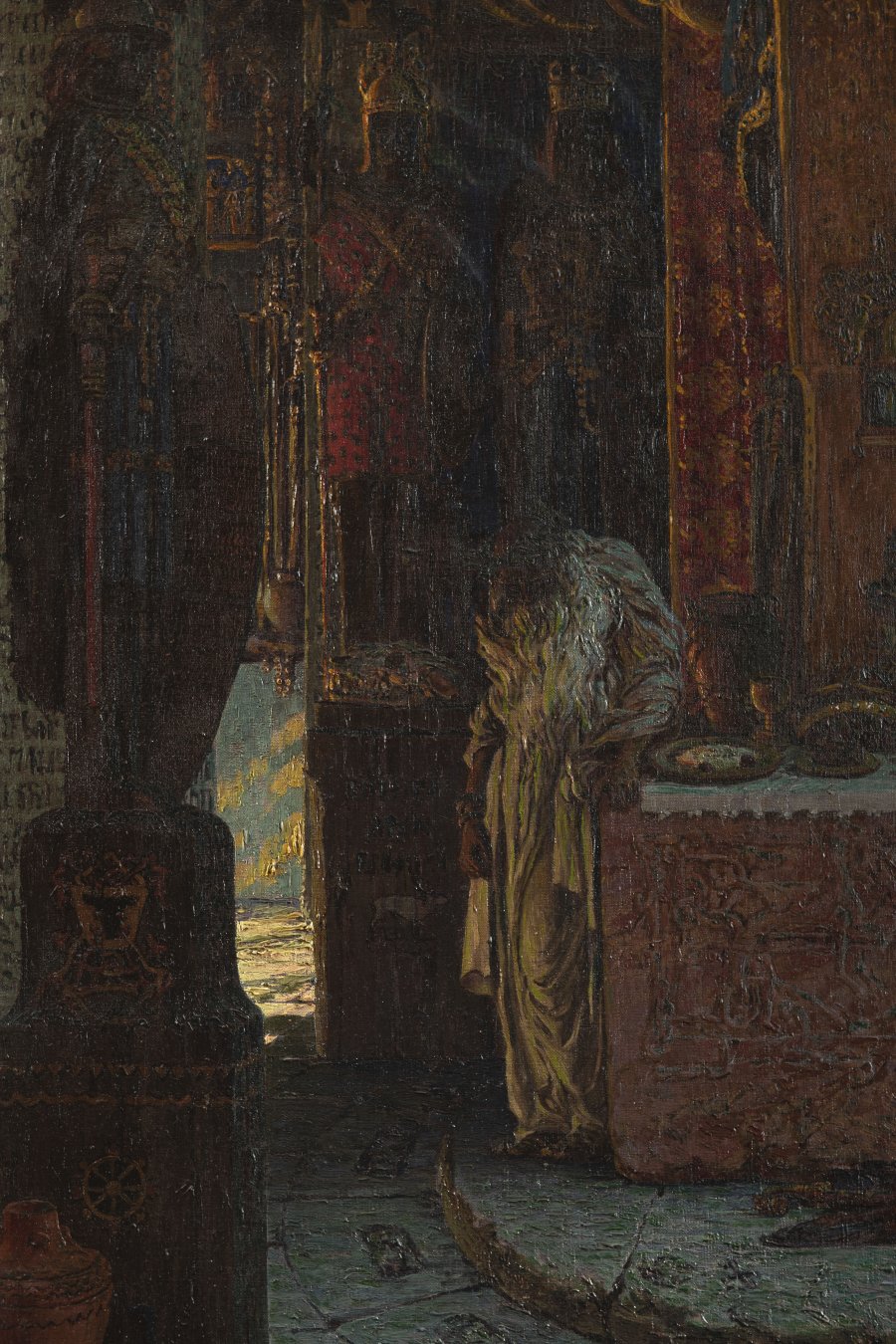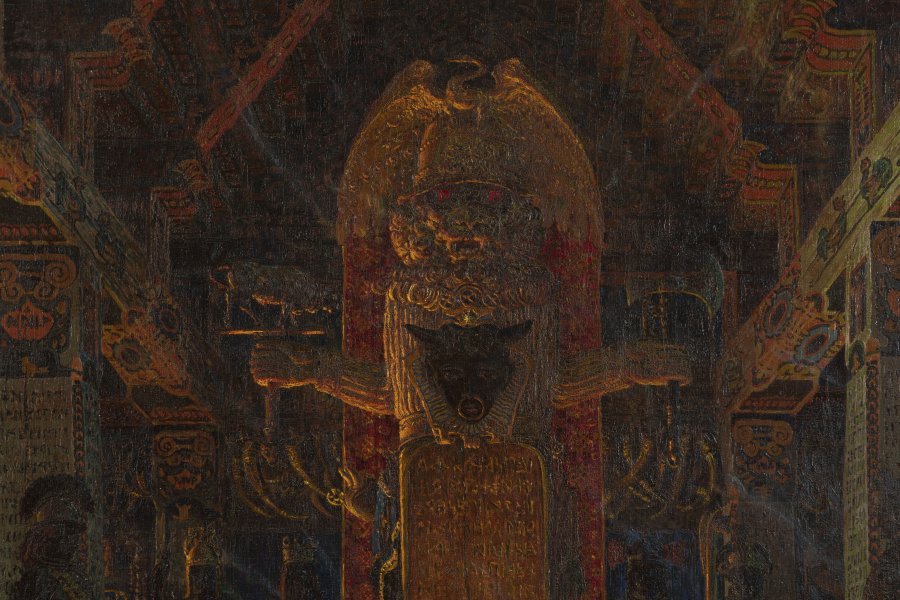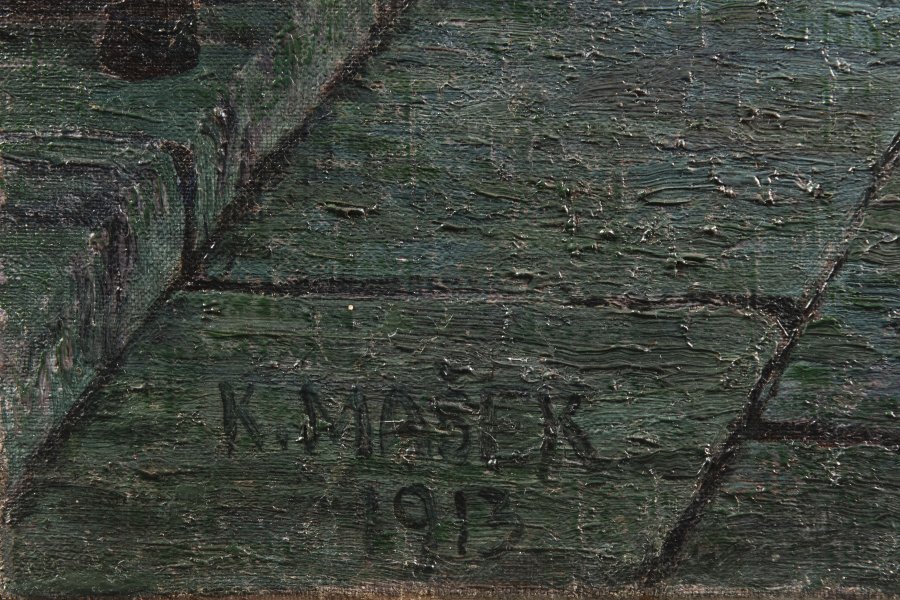Lot 94
RADOGOST THE GOD
1913
160 x 100 cm (h x b)
| 48 980 EUR
The works of Karel Vítězslav Mašek with the theme of ancient Czech history are interwoven with allegories and reflections of the beauty of old stories. Both heroes of famous names and often priests of pagan cults perform on them, who make divinations from symbols and smoke of herbs and protect the now destroyed temples. In Radegast, we are invited by the author to an impressive and mysterious ritual space outside of space and time, which is dominated by the idol of the god Radegast with glowing eyes. The generously chosen format and virtuoso work with light and shadows further accentuate the impression of an exceptional moment in the life of a pilgrim who first stands on sacred ground and sees the Slavic god Radegast. In the 11th century, Adam of Bremen described the Church of Radegast as follows: "A large temple is built here for the demons of which Radegast is prince. Its idol is of gold, a bed lined with purple. This village has nine gates and is surrounded by a deep lake. Only those who offer sacrificial offerings or ask for an answer may pass." Karel Vítězslav Mašek undoubtedly sought a credible appearance of the destroyed church in the descriptions of historians and preserved buildings. The striking resemblance of the depicted temple to the wooden column churches from the 12th century demonstrates its great sense of theme and thorough preparation before applying the first brushstrokes to the canvas. The texts of ancient prayers, hidden in rune-like script, are guarded by armed warriors who symbolically delimit the space, and almost inconspicuously, the high priest of the sanctuary comes to the center of the scene, leaning on the altar to hear the newcomer. At the foot of the altar is the skull of Bishop John, who was killed by the Lusatian-Serbian Slavs, beheaded and sacrificed to the god Radegast - the god of hospitality. The appearance of his depiction of the skull is strikingly reminiscent of St. Vojtěch, who also disregarded the warning, had the sacred oak groves felled and subsequently died at the hands of strongly believing pagans. Karel Vítězslav Mašek was the first Czech artist whose work fell into the international context of symbolism. His large-format painting Libuše received attention in the world, and already in the early 1970s his name began to appear at foreign exhibitions, his works were reproduced in catalogs. He studied at the Julian Academy in Paris, where he went with Alfons Mucha.
Published by: Faberová, K .: Karel Vítězslav Mašek. Eminent, 2002.
Andere Auktionsgegenstände
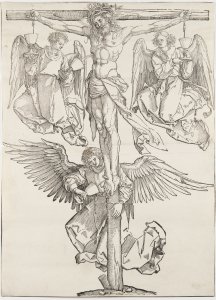
Lot 1 CHRIST ON THE CROSS WITH THREE ANGELS
Rufpreis8 000 CZK | 327 EUR
Erzielter Preis
25 000 CZK | 1 020 EUR
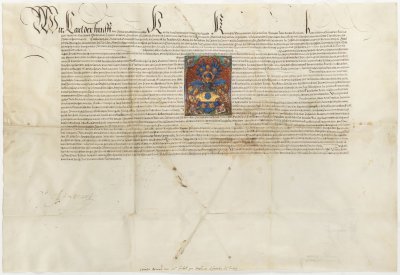
Lot 2 GRANT OF ARMS
Rufpreis48 000 CZK | 1 959 EUR
Verkauft
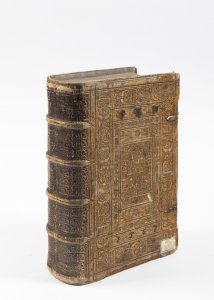
Lot 3 BIBLE
Rufpreis12 000 CZK | 490 EUR
Erzielter Preis
70 000 CZK | 2 857 EUR
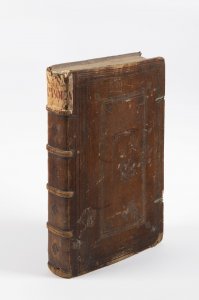
Lot 4 AN EMBLEM AND SYMBOL BOOK
Rufpreis18 000 CZK | 735 EUR
Erzielter Preis
28 000 CZK | 1 143 EUR
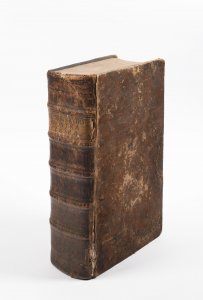
Lot 5 CZECH CHRONICLE
Rufpreis15 000 CZK | 612 EUR
Erzielter Preis
40 000 CZK | 1 633 EUR
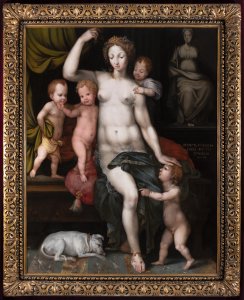
Lot 6 ALLEGORY OF PERFECT LOVE
Rufpreis750 000 CZK | 30 612 EUR
Erzielter Preis
750 000 CZK | 30 612 EUR
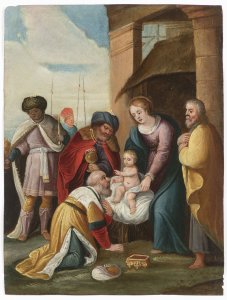
Lot 7 DIPTYCH PAINTINGS
Rufpreis48 000 CZK | 1 959 EUR
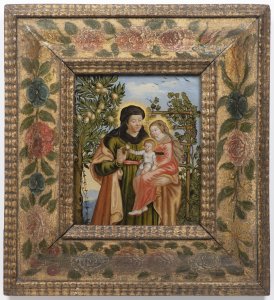
Lot 8 HOLY FAMILY
Rufpreis24 000 CZK | 980 EUR
Erzielter Preis
30 000 CZK | 1 224 EUR
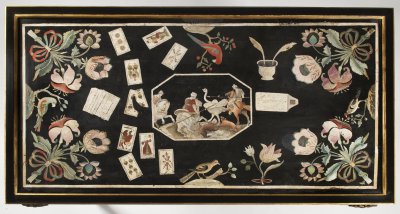
Lot 9 AN IMPORTANT BAROQUE PLAYING DESK
Rufpreis120 000 CZK | 4 898 EUR
Erzielter Preis
310 000 CZK | 12 653 EUR
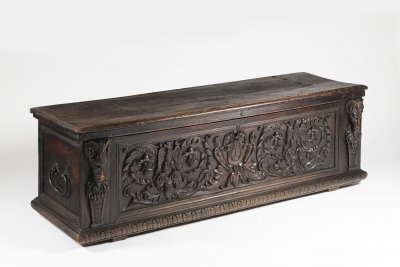
Lot 10 A MANNERIST CHEST
Rufpreis35 000 CZK | 1 429 EUR
Erzielter Preis
65 000 CZK | 2 653 EUR
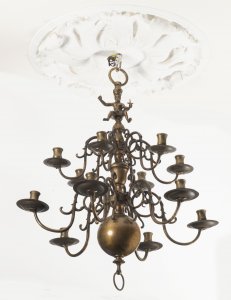
Lot 11 A DUTCH TYPE BAROQUE CHANDELIER
Rufpreis18 000 CZK | 735 EUR
Erzielter Preis
30 000 CZK | 1 224 EUR
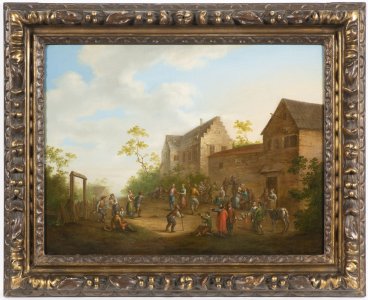
Lot 12 A VILLAGE FEAST
Rufpreis80 000 CZK | 3 265 EUR
Erzielter Preis
80 000 CZK | 3 265 EUR

